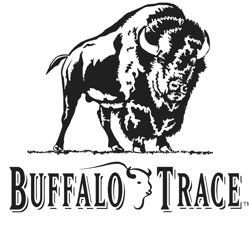
Colonel Edmund H. Taylor, Jr.
In New Orleans, “Uncle Zach” provided the young man a good classical education as well, enrolling him in classes at Tulane Preparatory School. Nevertheless, in 1851, Taylor returned to Kentucky and moved to Lexington. There he lived with another uncle; this one shared his name, Edmund H. Taylor. The senior Edmund was a banker by trade. Because their names were the same, at that time, “Jr.” was added to the young Taylor’s name to distinguish him from his uncle.
Later in that same year of 1851, Jr. married Fanny Johnson, who was said to be the most beautiful woman in Central Kentucky. His uncle gave Jr. a job at the bank, where he had shown aptitude, interest, and a willingness to learn the banking craft. Meanwhile, Jr. and Fanny would go on to have a total of seven children.
Taylor’s occupation as a banker, coupled with his relationship to important people in the bourbon industry, helped him learn a lot about the whiskey trade. He had access to most distillers’ books, which allowed the bank to decide on whom to lend money. On occasion, his job gave Jr. the responsibility to foreclose on his distillery friends. Even so, Edmund soon realized that there was probably a lot of money to be made in distilling and selling whiskey at that time in Kentucky.
But Edmund didn’t just want to make any whiskey like the many distillers around Kentucky were doing. He wanted to make a quality product; he wanted to make the best whiskey that America had to offer. With his interest piqued and his curiosity running wild, Taylor spent several years after the Civil War touring Europe and gaining education in the latest distilling techniques, including the importance of keeping the liquids in copper kettles. When he returned to the United States in late 1867, he opened his first distillery and called it “The Hermitage" after Andrew Jackson’s Estate.
Just two years later, in 1869, Taylor purchased the old Leestown Distillery, just outside Frankfort, and christened it "O.F.C. (Old Fire Copper) Distillery." This was his first major step he took into distilling, which made an immediate impact on the industry by updating, upgrading, and increasing the capacity of the entire plant.
Among his inventions or improvements were using copper fermentation tanks, state-of-the-art grain equipment, column stills, modernized buildings, a more efficient sour mash technique, and a first-of-its-kind steam heating system (which is still used in the warehouses today). Although he operated successfully for more than a decade, a combination of factors brought Taylor close to bankruptcy in the late 1870s and forced him to sell control of his distillery to the St. Louis Liquor firm of Gregory and Stagg (which was then owned by the soon-to-be legendary George T. Stagg).
During his later life, Taylor was also a skilled politician and was elected Mayor of Frankfort for 16 consecutive years. During that time, he used his influence to fight for higher standards in the bourbon industry, and perhaps most importantly, pushed for the passage of the "Bottled-in-Bond Act of 1897" along with the Secretary of the Treasury John Carlisle.
Contributed by Colonel CRaig Duncan, Columbia, Tennessee
"Father of the Modern Bourbon Industry"
Colonel Edmund Haynes Taylor, Jr., was born in Columbus, Kentucky, in 1830. His father passed away when he was only 5 years old, and as a result, the young boy was sent to a Louisiana plantation to live with his great-uncle Zachary, where he received a very good education, both informal and formal. At that time, Zachary Taylor was a Colonel in the U. S. Army and rose through the ranks quickly. He established defensive positions and forts along the Mississippi River to ensure America’s dominance along the important waterway, then made a name for himself fighting Indians in the Black Hawk War. Later, of course, Colonel Taylor became President Taylor.
Colonel Edmund Haynes Taylor Jr. was, in fact, related to two U.S. presidents. Not only was he the grandnephew of President Taylor, but he was also a descendant of James Madison through his mother's side. This lineage is often cited as a reason for Taylor’s ambition and leadership qualities.
The three brands as part of the E. H. Taylor line that are always available are (from left to right); Colonel E. H. Taylor Small Batch (Orange Tax Stamp), Colonel E. H. Taylor Single Barrel (Burgundy Tax Stamp) and Colonel E. H. Taylor Straight Rye (Red Tax Stamp).
The six brands as part of the E. H. Taylor line that are Limited Edition Releases and are very hard to find are (from left to right); Colonel E. H. Taylor Barrel Proof (Green Tax Stamp), Colonel E. H. Taylor Cured Oak (Burgundy Tax Stamp), Colonel E. H. Taylor Seasoned Wood (Black Tax Stamp), Colonel E. H. Taylor Old Fashioned (Blue Tax Stamp), Colonel E. H. Taylor Warehouse C Tornado surviving (Gray Tax Stamp) and Colonel E. H. Taylor Four Grain (Green Tax Stamp).





